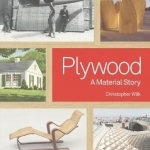Plywood
BookThis item doesn’t have any media yet
2017 | Sport & Leisure
Beautiful, strong, and ubiquitous, plywood's worth far exceeds its general reputation. A manufactured wood product, plywood can be used both as boards and in molded form. Its applications are therefore wide-reaching: airplanes, architecture, furniture, boats, trains, and more. Its great flexibility also gives plywood-manufactured products their stylish aesthetic, as seen in chair designs by Charles and Ray Eames.
Plywood has been associated with cheapness. Yet it can be beautiful and offers possibilities for experimental design. It is made by gluing together layers of crossgrained veneers, creating a board stronger than solid wood. Beginning with the earliest use of plywood technique by ancient Egyptian woodworkers, plywood's history as an industrial product takes place from the mid-nineteenth century to the present.
Produced to accompany a V&A exhibition and the first in a series on the cultural history of materials, Plywood is an exploration of design, technological, social, and cultural history. It tells the cultural history of plywood, from its often hidden use in nineteenth- and early twentieth-century design, to its emergence as a material celebrated first by 1930s modernists, then on a much larger scale post-1945. From the late 1970s plywood began to be replaced by cheaper substitutes, but it has undergone a huge revival over the past ten years. Plywood is now used in massive quantities in maker spaces and on digital design platforms, and has benefited from a resurgence of interest in the use of sustainable materials.
Related Items:
| Published by | Thames & Hudson Ltd |
| Edition | Unknown |
| ISBN | 9780500519400 |
| Language | N/A |
Images And Data Courtesy Of: Thames & Hudson Ltd.
This content (including text, images, videos and other media) is published and used in accordance
with Fair Use.
